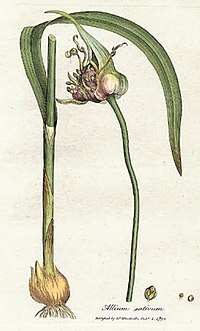
Photo from wikipedia
BACKGROUND Labor-saving pesticide application technology is eagerly pursued in the planting system of Chinese chives. In this study, we developed a set of application approaches by turning fungicides into smoke… Click to show full abstract
BACKGROUND Labor-saving pesticide application technology is eagerly pursued in the planting system of Chinese chives. In this study, we developed a set of application approaches by turning fungicides into smoke to achieve this goal. RESULTS The fungicides fludioxonil, fluopyram, boscalid, procymidone, and prochloraz could be vaporized into smoke at temperatures below 300 °C. The SFR (smoke formation rate) decreased with the increasing temperature. At 300 °C, the SFR of fludioxonil, fluopyram, boscalid and procymidone were all higher than 80%. At 300 °C and 600 °C, there were no significant differences in the smoke particle state of these five fungicides. However, the inhibition rate of these five fungicides against the growth of Botrytis squamosa generally decreased with the temperature. At 600 °C, only fludioxonil and boscalid had inhibition rates higher than 80%. The deposition uniformity of fungicide smoke increased with the increasing amounts of NH4 Cl. When the amount of NH4 Cl reached 80% of the total content, the smoke of fungicide was uniformly deposited throughout each glass slide. In the greenhouse experiment, the control efficacy of fungicide application by smoke was significantly better than that of spraying application, whereas its residue was much lower. CONCLUSION It is feasible to control air-borne disease through the vaporization of fungicides into smoke by electrical heating. Smoke application would effectively inhibit the spores in the air and would not increase the humidity of the environment. These findings indicate that smoke application is a labor-saving pesticide application technology viable in production. © 2022 Society of Chemical Industry.
Journal Title: Pest management science
Year Published: 2022
Link to full text (if available)
Share on Social Media: Sign Up to like & get
recommendations!